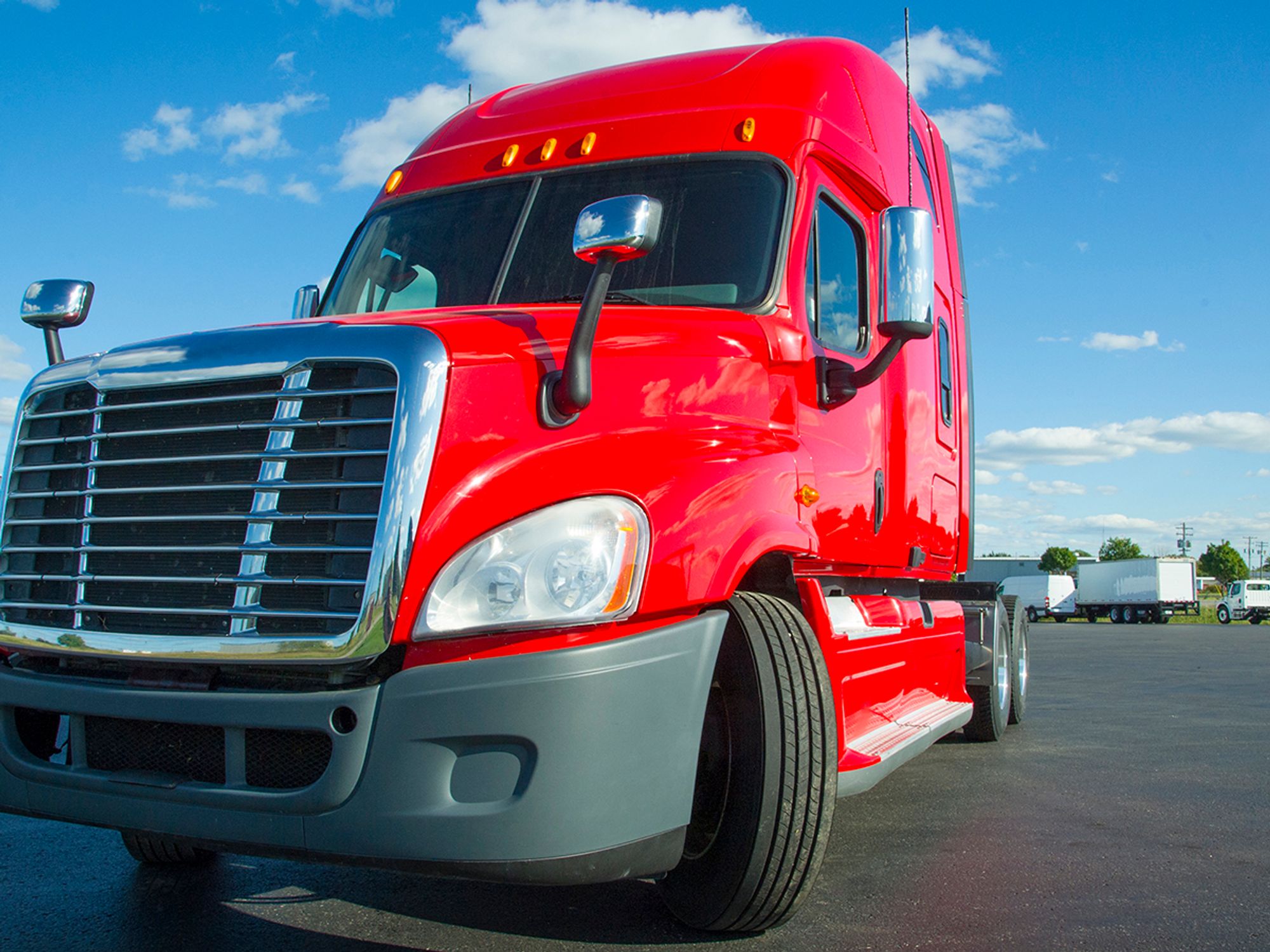Aerodynamics

- The aerodynamics of a vehicle can be modified to optimize fuel economy through changes to the roof, cab, and accessories.
Air resistance is a vehicle’s second greatest impediment to movement, and therefore, optimum fuel economy. Only weight, and the rolling resistance it creates, impacts miles per gallon more. Efficient aerodynamics smooth the flow of air over, under, and around the vehicle. It is not uncommon for some aerodynamic vehicle designs to save carriers as much as four to five cents per mile in fuel savings.
When spec’ing trucks for fuel economy, companies should start with the full-cab roof fairing. It should match the height of the trailers at the company. A proper roof fairing can improve miles per gallon (mpg) performance up to 15 percent when compared to operating without one. Roof fairing considerations include:
- For raised-roof sleeper cabs. Raised-roof sleeper cabs are slightly shorter than a trailer’s roof. Therefore, if a motor carrier has these types of vehicles, they might want to consider adding a small fairing accessory. Without this retrofit, the company may lose from 4-10 percent of the benefits of a full roof fairing.
- For low-height trailers. Installing a full-height roof fairing on a tractor that hauls primarily low-height trailers (flatbed, tanker) would actually add resistance. For this type of operation, a carrier might be better off with flat-roof or mid-roof fairing that better matches their trailer fleet.
There are other aerodynamic/air-deflector options. Most aerodynamic options are equipment packages or after-market add-ons. These include:
- Cab extenders, which are designed to bridge the gap between the truck cab and the trailer. The goal of these extenders is to attempt to reduce the gap to less than 18 inches.
- Side skirts, which cover the fuel tanks and battery box and smooth out the overall profile of the truck.
- Air dam front bumpers and aerodynamic hoods which are designed to ease air flow around the front of the vehicle.
- Aerodynamic accessories (or aerodynamic location of accessories), such as mirrors, air intakes, air horns, and grab handles. Note: Two manufacturers have been granted exemptions that allow the use of small external cameras and internal screens mounted on the left and right windshield posts in the place of mirrors to improve fuel mileage.
- Trailer air deflectors including nose and rear “bubbles,” side skirts, and axle air deflectors. Any of these options can increase fuel economy by 1-3 percent.
